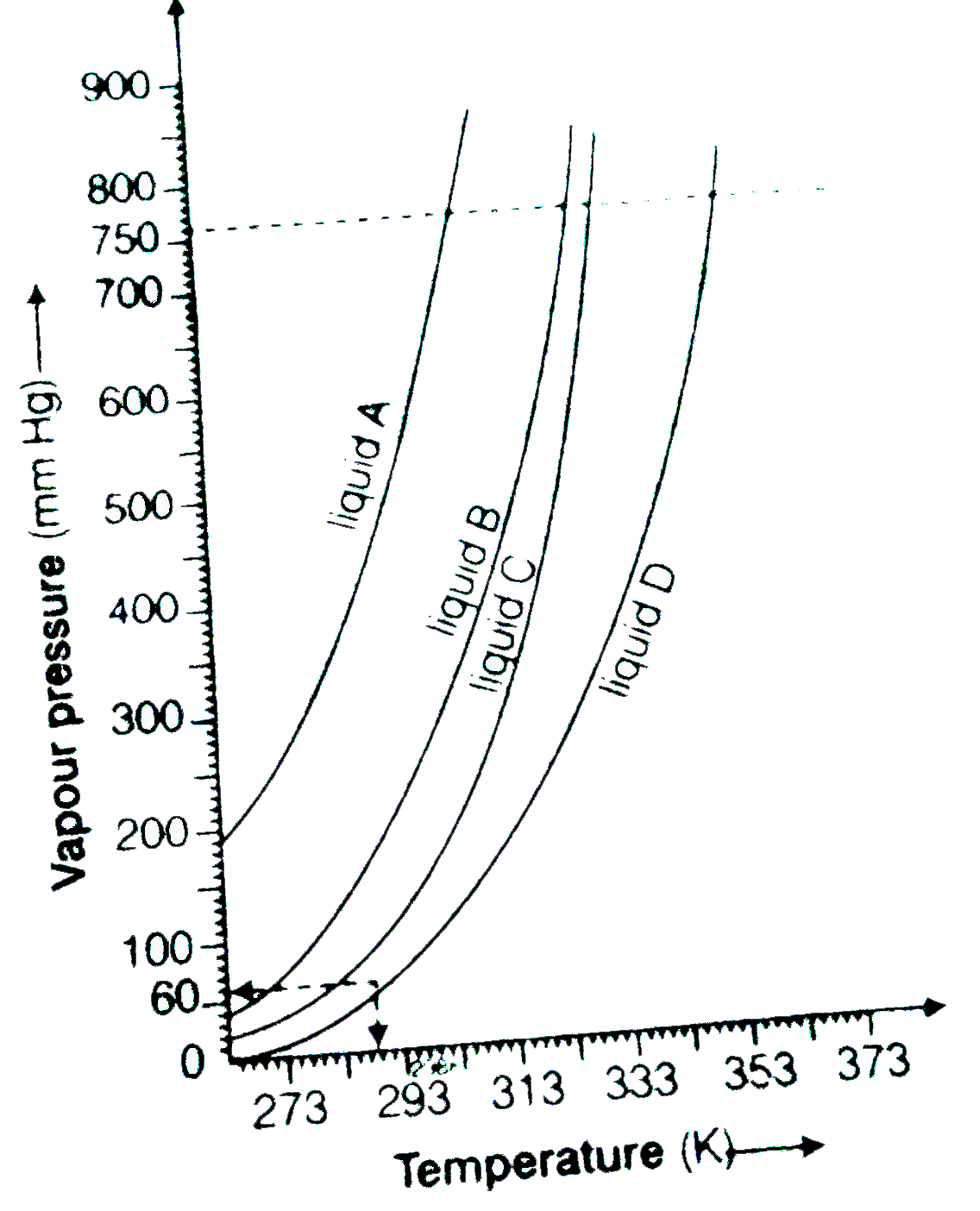Complete Solutions to Long Answer Type Question of chapter STATES OF MATTER of Class 11 book with complete answers and questions
| Class 11 | CHEMISTRY |
| Chapter | STATES OF MATTER |
| NCERT EXEMPLAR | Long Answer Type Question |
| Number Of Questions | 6 |
| Academic Year | 2023-24 |
The average velocity of `CO_(2)` at the temperature `T_(1)K` and maximum (most) proable velocity of `CO_(2)` at the temperature `T_(2) K` is `9xx10^(4) cm s^(-1)`. Calculate the values of `T_(1)` and `T_(2)`.
View SolutionThe variation of vapour of different liquids with temperature is shown in figure
(i) Calculate graphically boiling points of liquids A and B.
(ii) If we take liquid c in a closed vessel and heat it continuously. At what temperature will it boil ?
(iii) At high altitude, atmospheric pressure is low (say 60 mm Hg). At what temperature liquid D boils ?
(iv) Pressure cooker is used for cooking food at hill station. Explain in terms of vapour pressure why is it so ?

View SolutionWhy does the boundary between liquid phase and gaseous phase disappear on heating a liquid upto critical temperature in a closed vessel ? In this situation what will be the state of the substance ?
View SolutionWhy does sharp glass edge become smooth on heating it upto its melting point in a flame ? Explain which property of liquids is responsible for this phenomenon.
View SolutionExplain the term 'laminar flow'. Is the velocity of molecules same in all the layers in Laminar flow ? Explain you answer.
View SolutionCarbon dioxide unusual because it has no liquid phase at normal atmospheric pressure. Instead, the solid sublimes directly to the gas phase. To obtain the liquid phase at room temperature, a pressuer of _____`MP` a must be applied.
View Solution
Long Answer Type Question questions and complete solutions for chapter STATES OF MATTER of NCERT CHEMISTRY (HINGLISH) of Class 11